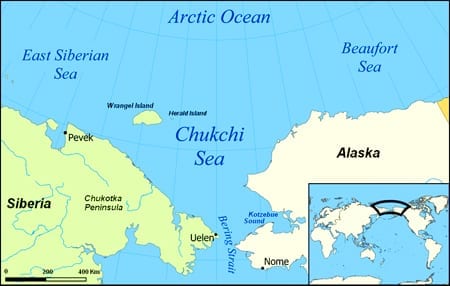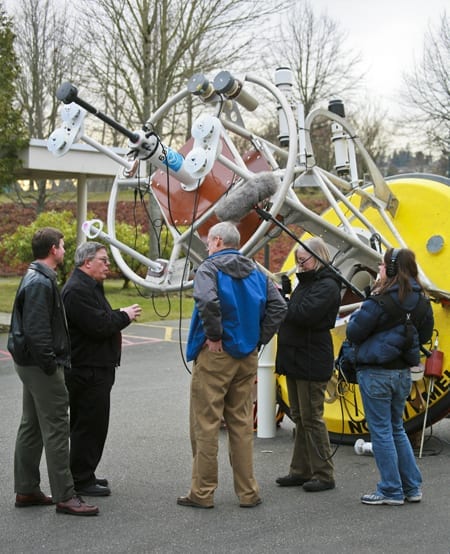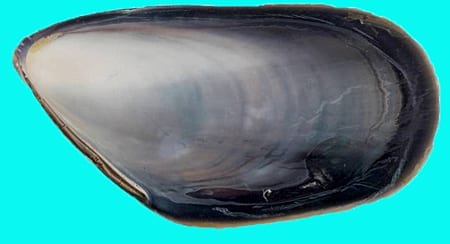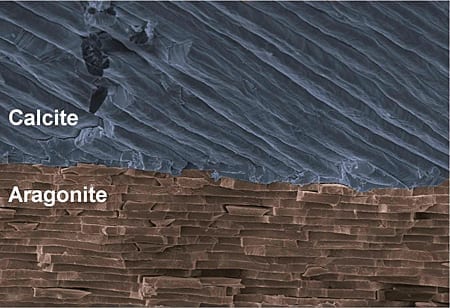By Daniel de la Calle
I bring you some research news and job opportunities to start the week:
•The University of Alaska Fairbanks placed its first Ocean Acidification buoy in Alaskan waters last April. “This is the first dedicated ocean acidification mooring to be deployed in a high-latitude coastal sea,” said Jeremy Mathis, principal investigator for the project and an assistant professor of chemical oceanography at the University of Alaska Fairbanks. “Other moorings have been deployed with ocean acidification sensors, but this is the first complete package in Alaska.”
The first buoy was assembled by “our” Chris Sabine at UAF’s Seward Marine Center and is floating and measuring away at the mouth of Resurrection Bay. The second one is going in the Bering Sea any day now and a third one will be placed in the Chukchi Sea this October.

Each one of these buoys contains two sets of instruments. The first measures pH levels, water temperature, carbon dioxide levels and other data at water surface, while the second collects pH levels, carbon dioxide, temperature, salinity and other information at the bottom of the buoy. All data is sent in real time via satellite to the laboratories.

Chris Sabine and Dick Feely showing us a buoy during the A Sea Change shooting
•An 18 month full time postdoctoral position is being offered as part of the Anillo Project ACT 132 “Influence of the near-future ocean acidification on shellfish resources: Latitudinal variations and fresh water inputs” in Chile. Experimental work will be conducted at the Calfuco Coastal Laboratory of Aquatic Resources (Universidad Austral de Chile) about 40 kms from Valdivia, Chile. The Postdoc felow can also make use of all the facilities and space of the Aquatic Ecosystem Functioning Lab at the EULA Center (Universidad de Concepción) in the town of Concepcion.
SALARY: The Postdoctoral fellow involves an annual gross salary of CLP$12.000.000 (Chilean pesos)
•The University of Glasgow is offering a 42 month position as Research Assistant/Associate in Ocean Acidification at the School of Geographical and Earth Sciences. Research work will try to determine how both the protein and mineral components of the mussel Mytilus edulis respond to Ocean Acidification.

The appointed person will also be responsible of running their experimental mesocosm facility.
SALARY: Grade 6 £25,854 – £29,099 / Grade 7 £31,798 – £35,788 per year, depending on experience.
Apply online at www.glasgow.ac.uk/jobs (Use Ref. E20098)
•Mytilus Edulis is the scientific name for the common blue mussel. The marine environment has an abundance of bio-mineralizing organisms that are threatened by ocean acidification. Coccoliths, corals or mollusks produce calcium carbonate structures with aragonite and calcite (Meta-stable aragonite being more susceptible to dissolving at low pH than calcite), the most common calcium carbonate polymorphs in the biosphere. The perturbation of bio-calcification has potentially wide-reaching consequences, that is why it is crucial to understand the impact that Ocean Acidification will have on this process.
The shell of the common mussel is composed of roughly equal layers of calcite and aragonite, making it an ideal organism to determine the influence of Ocean Acidification on both calcite and aragonite in a biological system.

Professor Maggie Cusack, of the University of Glasgow was awarded this past March a £255,234 grant to develop a research project aiming “to understand how both the protein and mineral components of M. edulis respond to ocean acidification with the identification of thresholds and tipping points in this response.”


